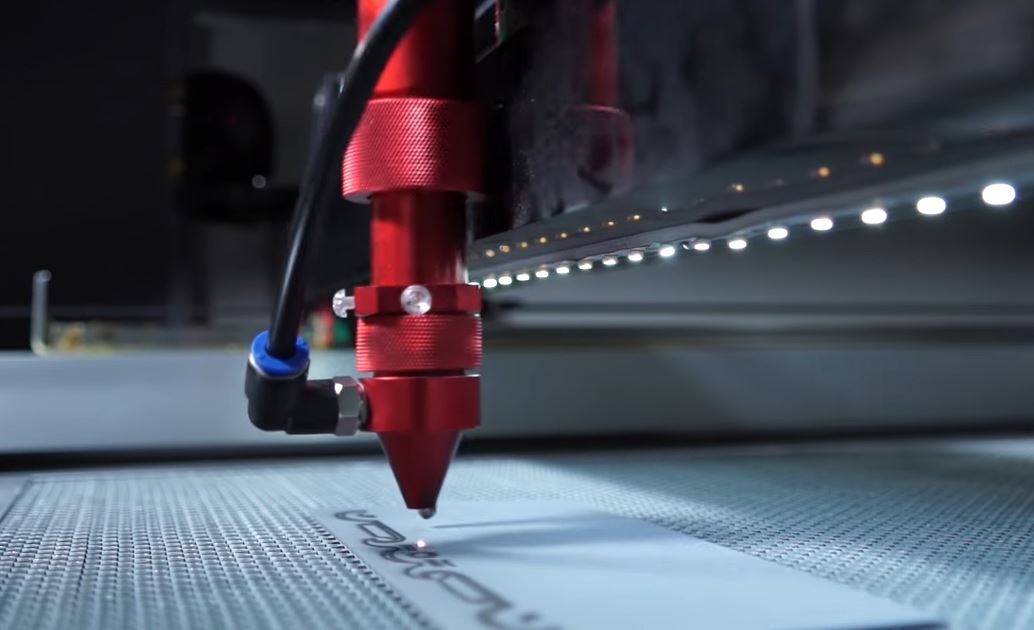Laser marking and laser engraving are the two most popular techniques for shaping product identification. The two techniques bring a blend of technology and precision. Just what is needed to keep brand identification authentic and precise. Each of the techniques comes delivers massive benefits individually. They include precision, affordability, and versatility.
However, you may not get exactly what you want if you’re unable to spot the subtle differences between the two options. But this guide will do the job for you. We demystify the two techniques by highlighting their functionalities, benefits, and applications.
Let’s delve!
Laser Marking Overview
Right from the word go, laser marking is a process created to enhance readability. The process’s main strengths are durability, easy readability, and contrast of markings. Being a high-energy process, it alters the chemical composition of a workpiece permanently. This happens in a beautiful way, and only according to what the laser beam focuses on.
Instead of burning away the material’s surface, laser marking includes three main processes. Blackening, etching, and contrasting. The end result is a high-contrast permanent mark that can be easily read and scanned.
Applications of laser marking
- Barcodes
- Logos
- Part Numbers
- Serial numbers
- QR codes
- Copyright/trademark icons
Strengths of Laser Marking
Laser marking is a high-speed process that creates legible marks on metals, plastics, etc. It saves time and increases production, suitable for large projects. You have high-contrast, durable marks without spending as much as you would with engraving. This method can also mark large surface areas within a short time.
This is an affordable option for both large and small customization. The process is associated with less waste because the material is not removed during the marking. It also has less maintenance.
Weaknesses of Laser Marking
One thing you’re going to note is laser marking can only deliver shallow engravings. You end up with permanent exquisite marks. However, the marks may not withstand chemical corrosion or long-term wear. So, consider the nature of the environment you’re going to have your equipment in. If it is harsh, then consider laser engraving.
Laser Engraving Overview
Laser engraving involves a powerful laser beam that removes layers of material from a workpiece’s surface. Talk of versatility. This process works with a wide range of materials including wood, plastic, and metal. Laser engraving also curates deep lettering, designs, and logos on various workpieces.
The process of engraving can go as deep as you want. The laser beam energy produces heat once it hits the workpiece surface. The heat is high enough to melt the surface and vaporize it. Eventually, you will have legible letterings that can be appreciated from afar.
Laser engraving applications
- Aerospace
- Fine art
- Jewelry
- Automotive
- Medical
- Electronics
- Semiconductor
Strengths of Laser Engraving
Laser engraving produces highly precise, easily readable designs. While the process curates perfect small logos, it is also a great option for large craft letterings. The end product is exquisite marks with a perfect thickness.
Laser engraving is a famous option for permanent product identification. This is because of the process’s ability to create deep engraves that are resistant to wear, fades, and scratches. So, you don’t have to worry about the condition of your workshop or wherever you’re going to place the laser machine.
Weakness of Laser Engraving
The process tends to take longer than laser marking. Besides, it uses more energy to eliminate layers of material surface. Large-scale productions tend to take long, which results in a longer production time. Hence, less productivity.
Which is The Best For You?
A few factors come into play when you want to decide which process to apply. For instance, the type of material you’re working on. Besides, other factors like the depth range, the effects of each process also matter. For some materials, engraving could lead to oxidation due to the incision of the surface. However, some materials will retain their exquisite appearance no matter how deep the engraves go.
Another thing to look at is the number of marks you intend to have on your workpiece. Laser marking doesn’t go so deep into the surface. Besides, it is perfect for high-contrast markings and large-scale production. Harsh conditions need wear-resistant marks like those created in laser engraving.
Conclusion
The quickest way to get a solution, whether marking or engraving, is knowing your needs. The second most important step is understanding which option aligns with your requirements. Differences between these two options are subtle. However, understanding your needs will lead you to the exact solution.
The above tried-and-true tips will set you on the right decision path whenever you need to get exact solutions. However, if you need to learn more about these differences, click for HantenCNC.
